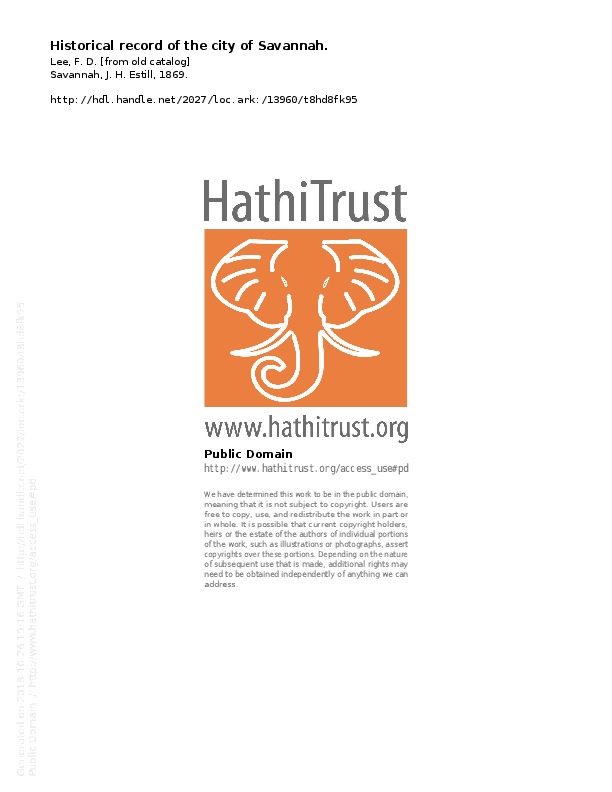George Whitefield's Influence on Savannah
The Historical Record of Savannah details the journey of the city of Savannah from “the days of the pioneers of business to the present time,” present time being 1868 (Agnew, Lee). It speaks to the volumes to which Savannah progressed due to the increasing settlement of people from England, like George Whitefield. After becoming an ordained minister in the Methodist church, George Whitefield traveled from England to Georgia and, in 1939, was granted a tract of 500 acres of land in order to build an ‘orphan house’ in Savannah (https://georgiainfo.galileo.usg.edu). As written in the Historical Record of Savannah, “Rev. George Whitefield, who had secured from the Trustees a tract of land near Savannah for the purpose of building an asylum for the poor children, arrived in May 1737,” (Agnew, Lee 18). Whitefield’s purpose in Georgia was to replace John Wesley as minister to the colonists of Georgia, and, as part of his mission as minister, he felt it necessary to build an orphan house for the community of Savannah (https://georgiainfo.galileo.usg.edu). The establishment of the orphan house, which Whitefield named ‘Bethesda’, signifies a turning point in the development of Savannah. The “bluff upon which the city of Savannah now stands,” was the former home to “a small tribe of indians,” whose way of life was completely altered by the cultural and technological advances brought to the colony by the English settlers (Agnew,Lee 1). Not only did George Whitefield bring new concepts of religion with him to Savannah, he also brought an industrial influence that began to develop Savannah into a productive ‘new-world’ city, with the help of other influential English settlers.
